There’s something magical about watching the world wake up alongside you. While most people are still buried under their blankets, early risers get to witness nature’s daily masterpiece unfold in real time. The soft golden light painting the landscape, the peaceful silence broken only by chirping birds, and that sense of having the entire world to yourself—it’s an experience that makes dragging yourself out of bed at 5 AM feel completely worth it.
From mountain peaks that touch the clouds to coastal cliffs where the ocean meets the sky, these viewpoints offer front-row seats to one of nature’s most reliable shows. Here’s a list of 17 sunrise spots that’ll have you setting multiple alarms and actually being excited about it.
Mount Washington

New Hampshire’s highest peak delivers sunrise views that’ll make you forget all about your morning coffee. The weather station at the summit records some of the world’s most extreme conditions, but on clear mornings, you can see across four states from this 6,288-foot vantage point.
The drive up the auto road takes about 30 minutes, giving you plenty of time to wake up fully before the main event. Just remember to bring extra layers—temperatures up here can be 20 degrees cooler than at the base, even in summer.
Cadillac Mountain
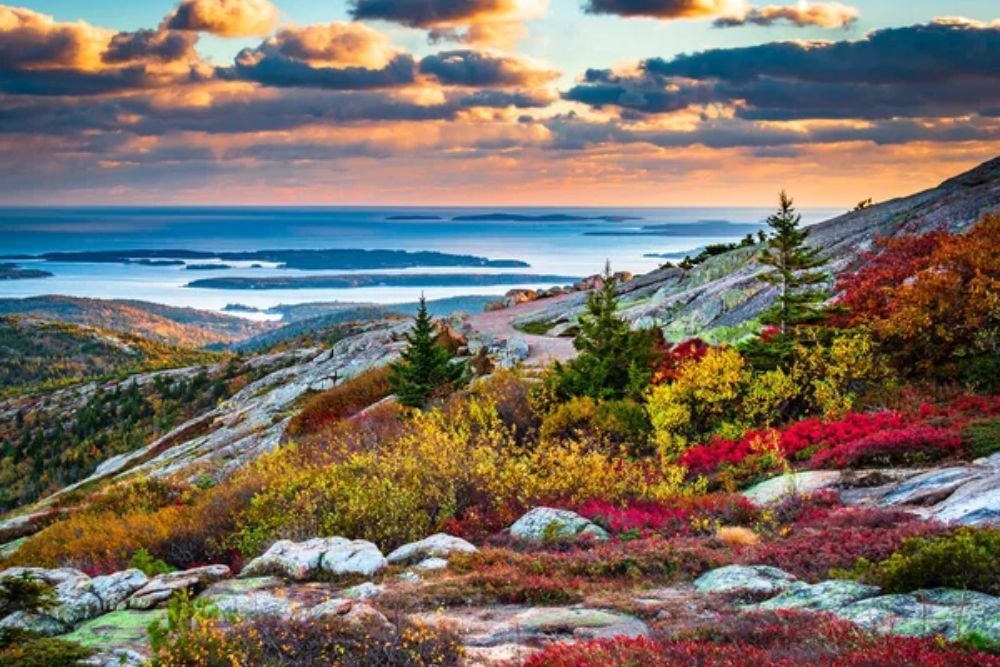
This Acadia National Park gem holds the honor of being the first place to see sunrise in the United States from October through March. The 3.5-mile summit road winds through forests and granite outcroppings before opening up to panoramic views of the Atlantic Ocean and Maine’s rugged coastline.
Park rangers estimate that over 150,000 people make the early morning pilgrimage here each year. The pink granite summit provides natural seating, though you’ll want to claim your spot early during peak season.
Like Travel Pug’s content? Follow us on MSN.
Haleakala Summit
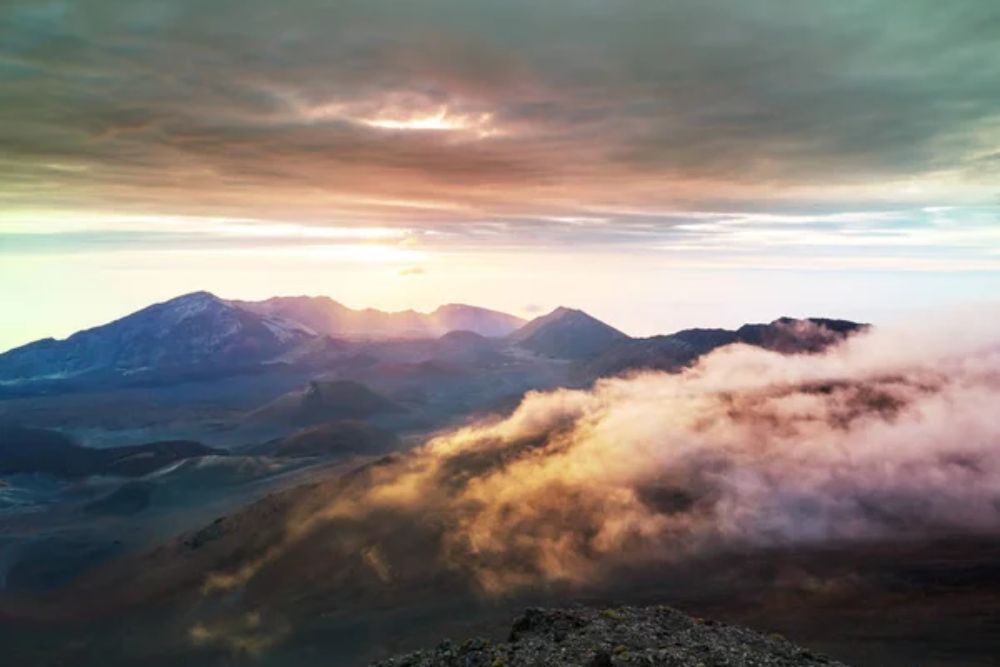
Hawaiian legend says the demigod Maui lassoed the sun from this very spot to slow its journey across the sky, and watching dawn break from 10,023 feet above sea level, you’ll understand why this summit has become legendary. The dormant volcano’s crater stretches for miles in every direction, creating an otherworldly landscape that feels more like Mars than Earth.
Temperatures can drop below freezing at the summit, so don’t let Hawaii’s tropical reputation fool you into wearing flip-flops. The drive from sea level takes about two hours, winding through multiple climate zones along the way.
Grand Canyon South Rim
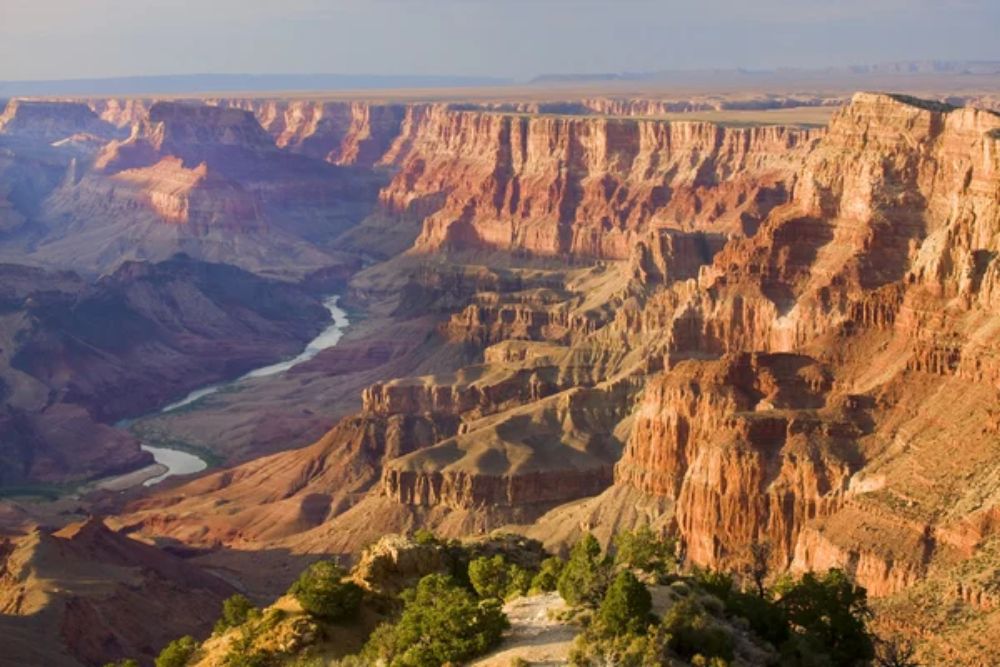
The most famous canyon in the world transforms into a kaleidoscope of colors as the sun climbs over the eastern rim. Hopi Point and Mather Point are the most popular spots, but they’re also the most crowded—consider Desert View for a slightly more peaceful experience.
The canyon’s layered rock formations act like a natural amphitheater, amplifying the sunrise colors and creating shadows that shift dramatically as the light changes. Rangers recommend arriving at least 30 minutes before sunrise to secure parking and find your viewing spot.
Mount Rainier
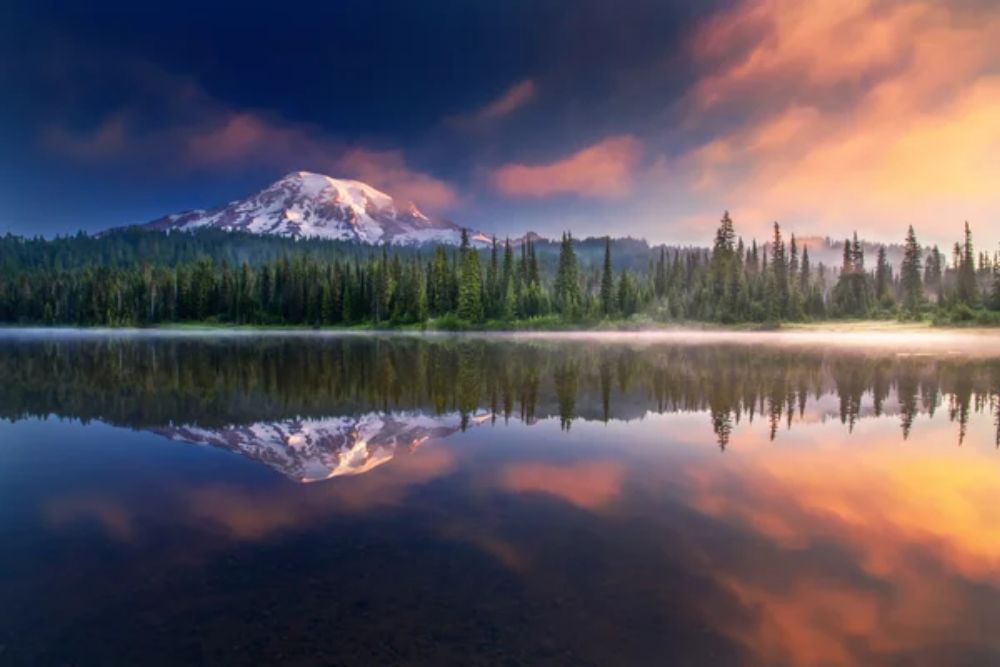
Washington’s iconic peak dominates the skyline from Paradise Point, where wildflower meadows frame the 14,411-foot glacier-capped mountain. The visitor center here sits at 5,400 feet, high enough to feel like you’re on top of the world but accessible enough for most vehicles.
Summer brings incredible displays of lupine, paintbrush, and bear grass that glow like jewels in the early morning light. The mountain creates its own weather system, so clear sunrise views are never guaranteed—but when conditions align, it’s absolutely spectacular.
Like Travel Pug’s content? Follow us on MSN.
Bryce Canyon
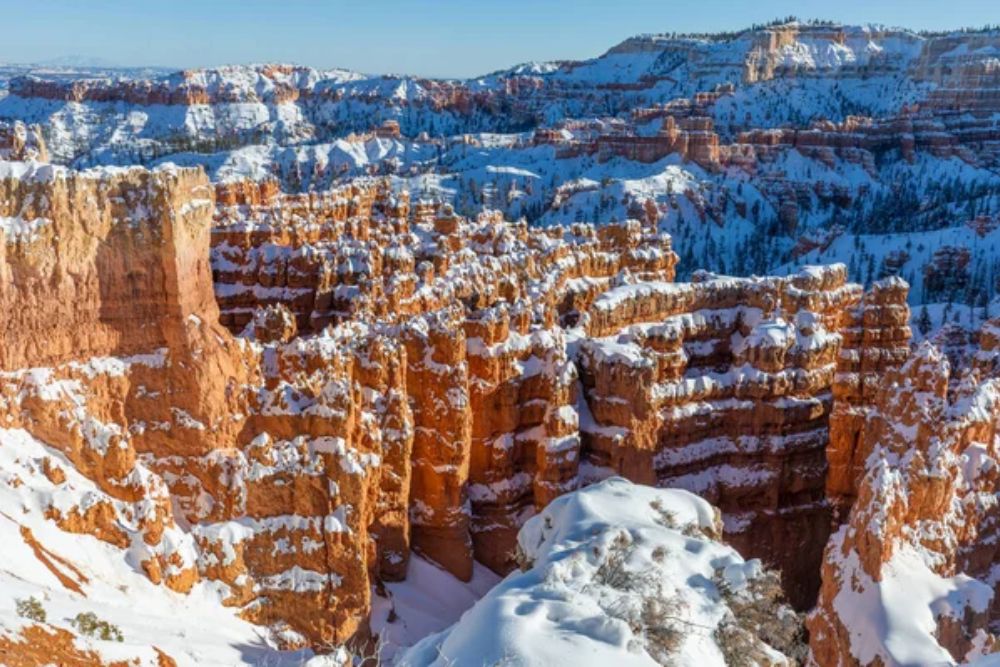
Utah’s collection of red rock spires, called hoodoos, creates one of the most unique sunrise settings in the country. Sunrise Point lives up to its name, offering perfect views of the amphitheater filled with these towering rock formations. The high elevation—over 8,000 feet—means you’ll need warm clothes even in summer, as temperatures can dip into the 30s.
Local Paiute legend describes the hoodoos as people turned to stone for their bad behavior, and in the ethereal dawn light, they do seem almost alive.
Acadia’s Bass Harbor Head Lighthouse

This iconic lighthouse perched on rocky cliffs provides a quintessentially Maine sunrise experience. The beacon has guided ships safely since 1858, and photographers have been capturing its silhouette against the dawn sky for decades.
Low tide reveals tidal pools filled with sea anemones and hermit crabs, adding another layer of interest to your morning adventure. The short walk from the parking area takes you through fragrant pine forests before opening up to sweeping ocean views.
Death Valley’s Zabriskie Point
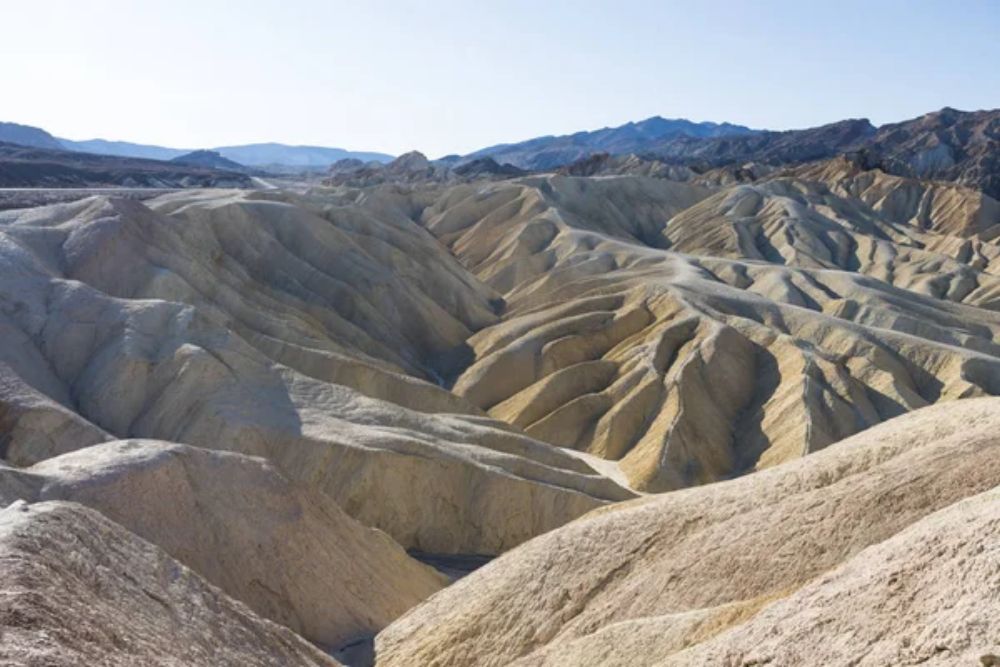
One of the hottest places on Earth becomes surprisingly cool before dawn, creating perfect conditions for watching the sun illuminate the badlands. The viewpoint sits 710 feet below sea level, surrounded by folded and twisted rock formations that look like a geological layer cake.
These multicolored sedimentary rocks tell the story of ancient lakes that dried up millions of years ago. The parking area fills up quickly during cooler months, so arriving early serves double duty.
Like Travel Pug’s content? Follow us on MSN.
Glacier Point
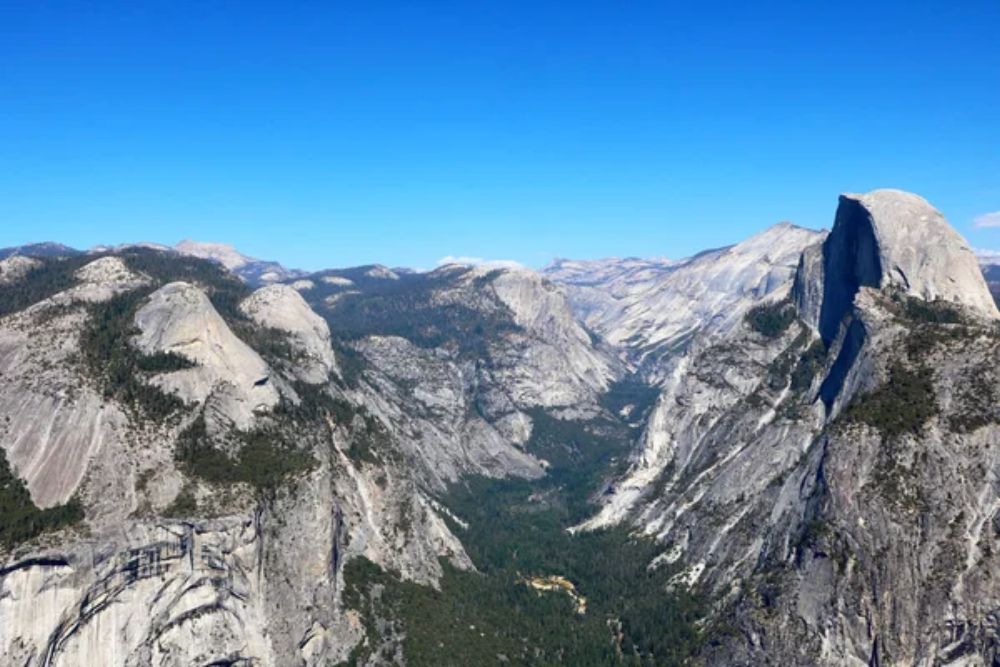
Yosemite’s granite dome offers arguably the best sunrise view of Half Dome and the entire valley floor. The drive up Glacier Point Road winds through giant sequoia groves and alpine meadows before reaching the 7,214-foot viewpoint. From here, you can see nearly 20 miles across the Sierra Nevada, with waterfalls cascading down granite cliffs in the foreground.
The road typically closes in winter due to snow, making this a seasonal sunrise destination.
Mount Evans
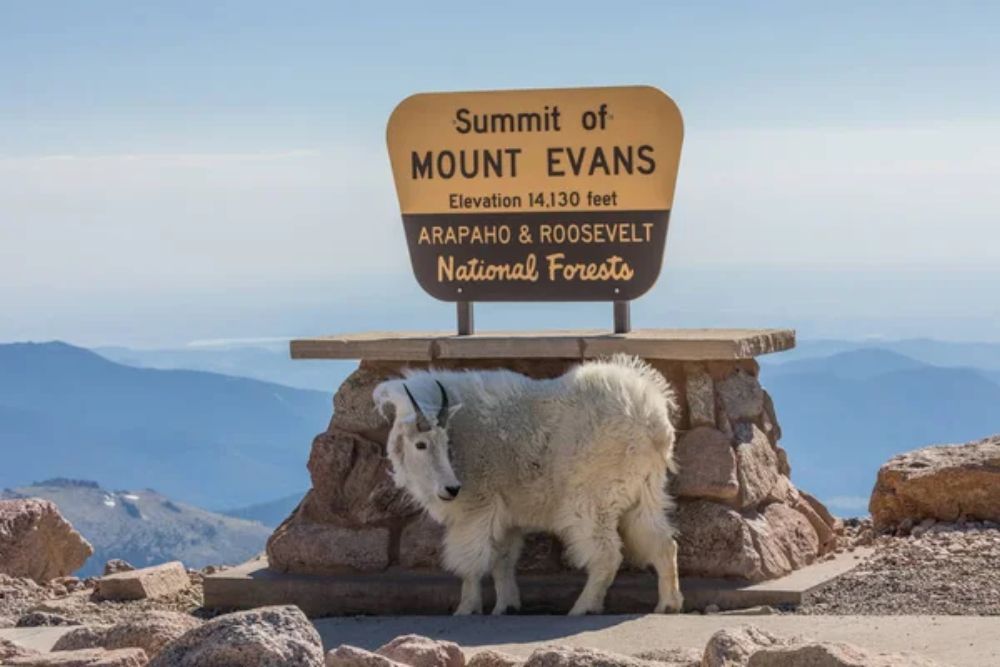
Colorado’s highest paved road leads to this 14,130-foot peak where you can literally drive above the clouds. The final stretch of road winds through 11 switchbacks, gaining 1,500 feet in just three miles.
Mountain goats often graze near the summit, seemingly unbothered by visitors or the thin air. The panoramic views stretch across the entire Front Range, with Denver’s skyline visible in the distance on clear mornings.
Clingmans Dome
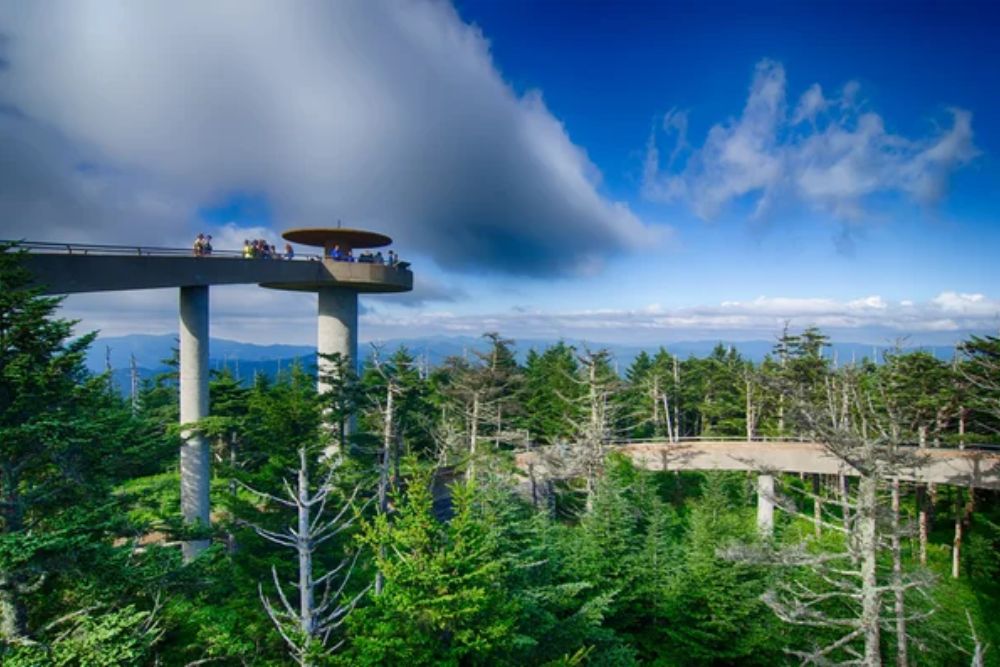
The highest point in the Great Smoky Mountains National Park provides 360-degree views from its distinctive concrete observation tower. This spot straddles the Tennessee-North Carolina border at 6,643 feet, making it the third-highest peak east of the Mississippi River.
The half-mile paved trail to the tower climbs steeply through a forest of Fraser firs, many of which have been damaged by invasive insects. On clear days, you can see seven states from the observation deck.
Like Travel Pug’s content? Follow us on MSN.
Pikes Peak
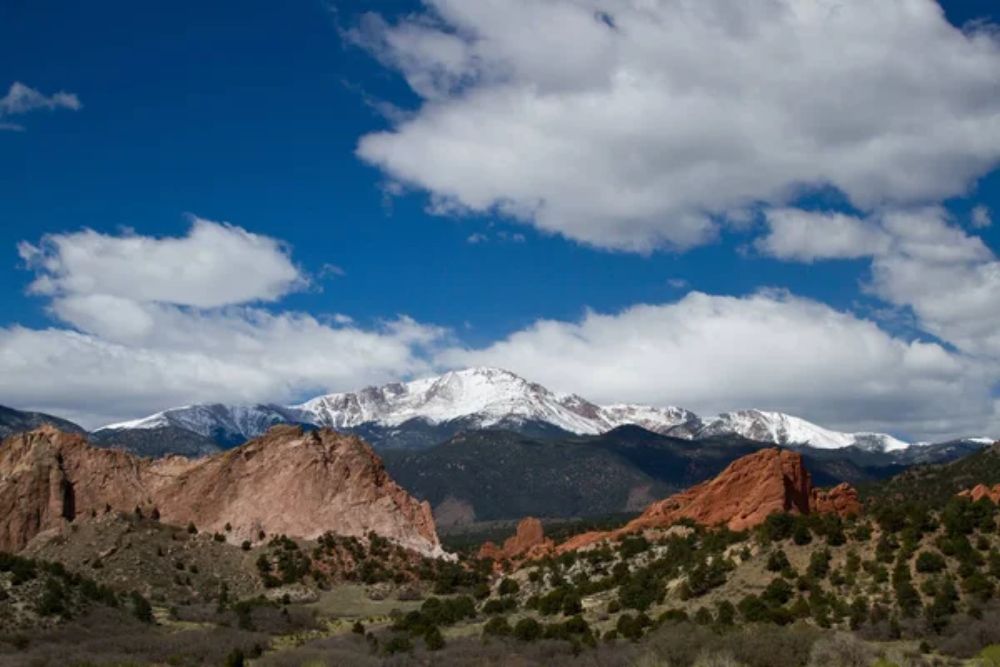
This Colorado fourteener inspired the song ‘America the Beautiful’ and continues to inspire early-rising visitors today. The summit highway climbs through four distinct ecosystems, from montane forests to alpine tundra above treeline.
Weather conditions can change rapidly at 14,115 feet, so bringing layers is essential even in summer. The famous summit house serves donuts that somehow taste better at high altitude, making the early wake-up call even more rewarding.
Sunrise Point at Capitol Reef
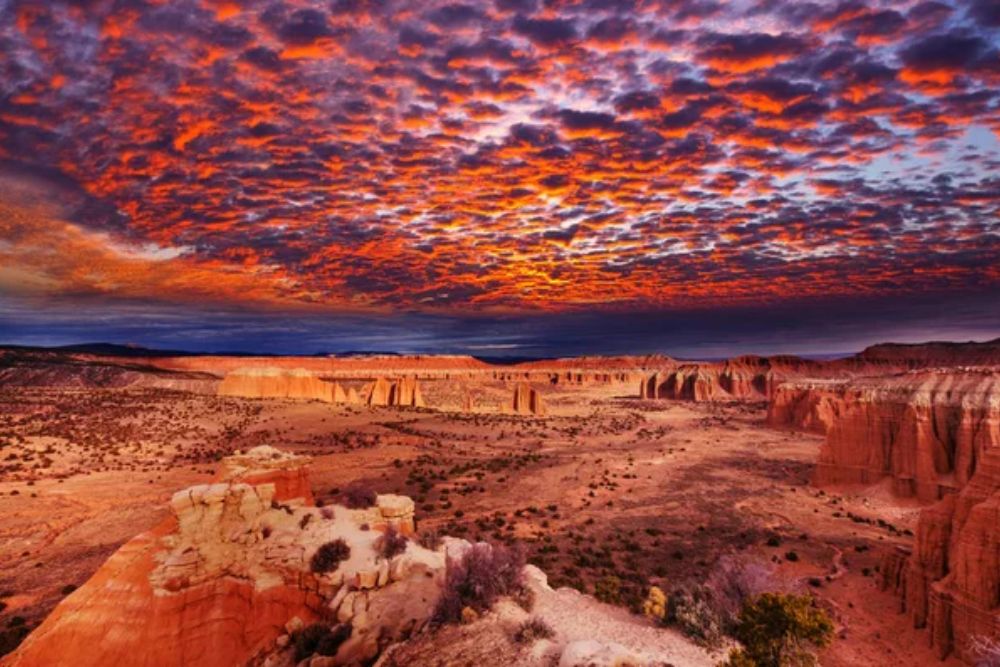
Utah’s Capitol Reef National Park offers a more intimate sunrise experience than its busier neighbors. The Waterpocket Fold, a 100-mile-long wrinkle in the Earth’s crust, creates dramatic cliffs and canyons that glow red and orange in the morning light.
Pioneer history adds another dimension to this landscape, with historic orchards and buildings scattered throughout the valley. The visitor center sits in the heart of the park, making it easy to combine sunrise viewing with exploring petroglyphs and hiking trails.
Mount Desert Island

Maine’s largest island provides multiple sunrise viewing opportunities, from the rocky shores of Sand Beach to the summit of Cadillac Mountain. The island’s unique position means you can watch the sun rise over the Atlantic while still being surrounded by mountains and forests.
Tidal pools along the shore reveal a hidden world of marine life during low tide. The island’s carriage roads, built by John D. Rockefeller Jr., provide scenic routes for those who prefer a gentler approach to their sunrise adventure.
Like Travel Pug’s content? Follow us on MSN.
Dante’s View
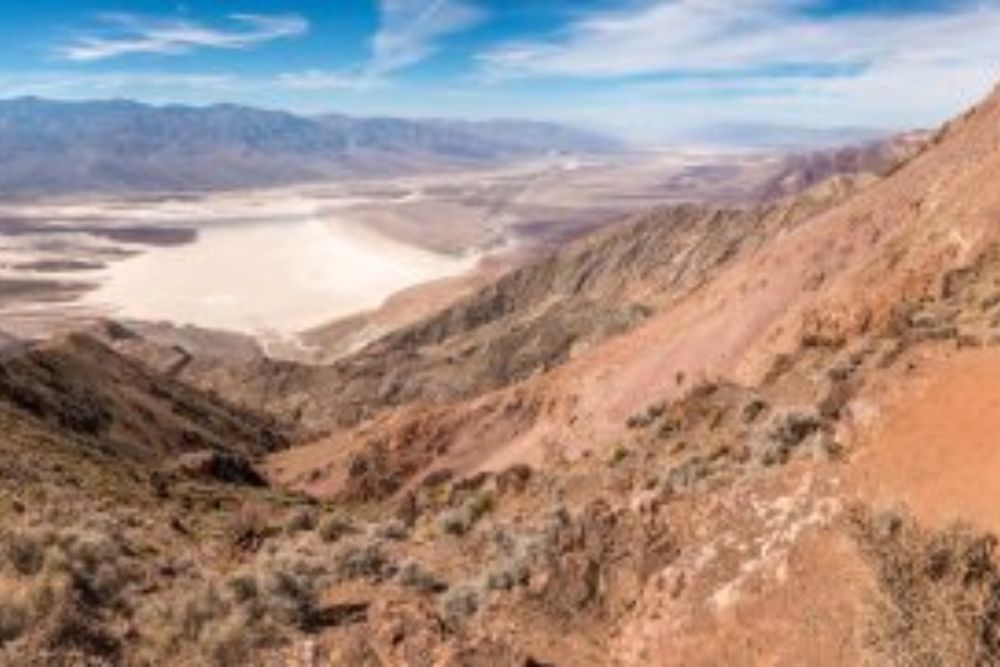
Death Valley’s highest easily accessible viewpoint sits 5,475 feet above the salt flats of Badwater Basin, creating one of the most dramatic elevation changes in North America. The 13-mile drive from the valley floor climbs through several life zones, from desert scrub to pinyon pine forests.
From this viewpoint, you can see both the highest point in the contiguous United States (Mount Whitney) and the lowest point (Badwater Basin) on clear days. The extreme elevation difference means temperatures can vary by 30 degrees between the viewpoint and the valley floor.
Mohonk Mountain House

New York’s Hudson Valley offers surprising sunrise beauty from this Victorian castle resort’s grounds. The Shawangunk Ridge provides dramatic cliffs and pristine lakes surrounded by forests that explode with color during the autumn months.
Rock climbing routes crisscross the white conglomerate cliffs, attracting adventurers from across the Northeast. Day passes allow non-guests to explore the extensive trail network and enjoy the same views that have attracted visitors since 1869.
Mount Mitchell
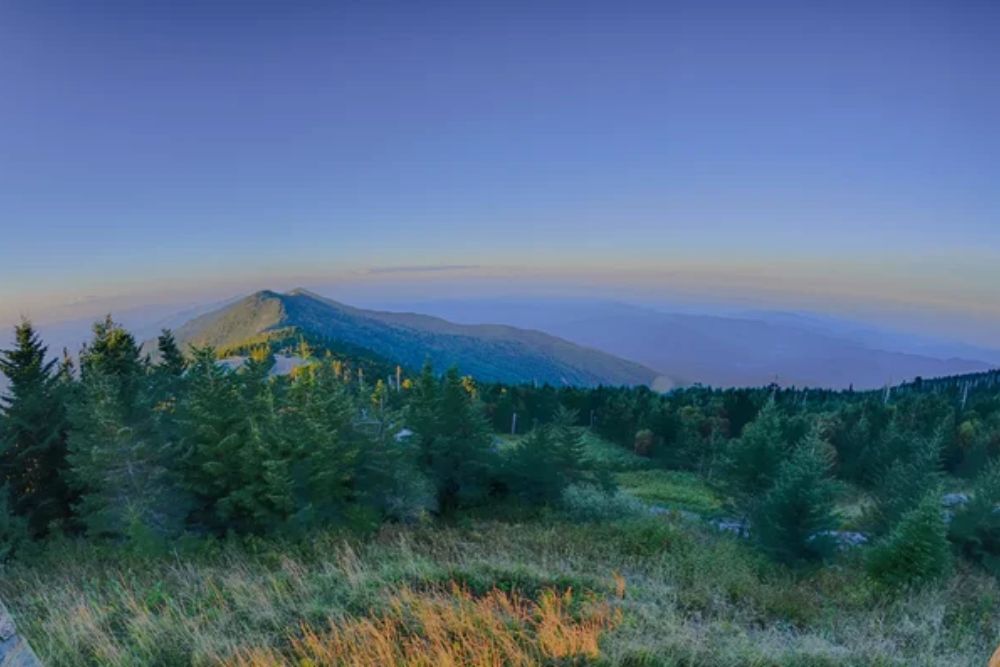
North Carolina’s highest peak rises 6,684 feet above sea level, making it the tallest mountain east of the Mississippi River. The summit’s observation deck provides panoramic views across the Blue Ridge Mountains, with layers of ridges fading into the distance like watercolor paintings.
Fraser fir forests near the summit create an almost Canadian atmosphere, complete with cool temperatures and misty mornings. The mountain’s extreme elevation means it can experience winter conditions even when the surrounding valleys are experiencing spring weather.
Like Travel Pug’s content? Follow us on MSN.
When Dawn Breaks Across America

These viewpoints represent more than just pretty places to watch the sun come up—they’re windows into the incredible diversity of American landscapes. From Maine’s rocky coastlines to Hawaii’s volcanic peaks, each sunrise spot tells a unique geological and cultural story.
The early morning light reveals details that the harsh midday sun often washes out, making these pre-dawn adventures worthwhile for photographers and nature lovers alike. Whether you’re seeking solitude, inspiration, or simply a reason to start your day with purpose, these sunrise destinations deliver experiences that linger long after the sun has climbed high into the sky.
More from Travel Pug

- 20 Best Beach Towns in the Carolinas
- 13 Destinations Where Tourists Regularly Regret Their Trip
- 20 Things You Actually Get in First Class
- 20 Small Airports With Aviation Museums
- 20 Places in the U.S. That Are Perfect for a Reset Trip
Like Travel Pug’s content? Follow us on MSN.
